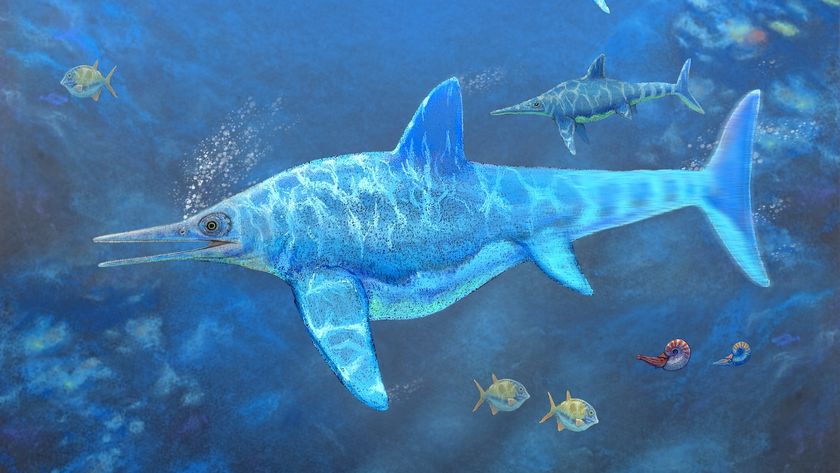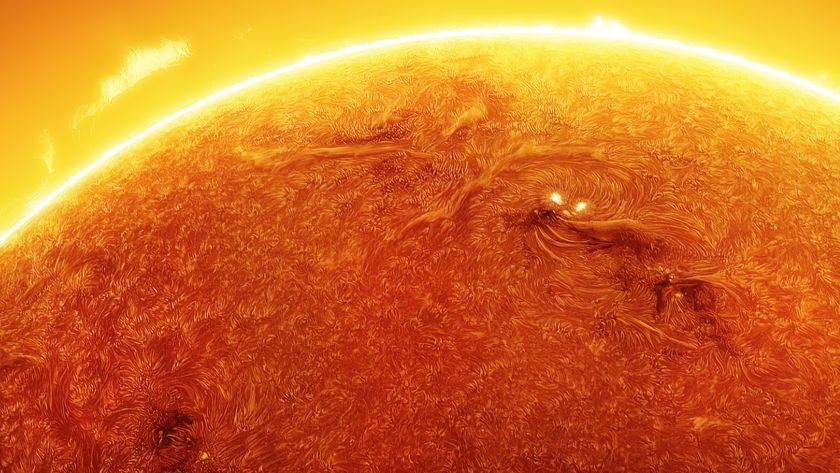
Bigger Isn't Always Better for Wildlife Reserves
While setting aside massive swaths of land would seem to provide powerful strongholds for biodiversity, a new study finds that such reserves often don't reach their full conservation potential because of poor placement — they are put in areas that are convenient for people to avoid, but not for threatened species to thrive.
Still, the study researchers say that there are other key roles that the world's largest reserves play in environmental conservation, and highlight the importance of defending them from growing threats.
"These protected areas might not be representing a lot of rare species, but they contribute in other ways," said Lisette Cantu-Salazar of the University of Sheffield in England, and lead author of the study recently published in the journal BioScience.
Some payoffs
Cantu-Salazar, along with her Sheffield colleague Kevin J. Gaston, took a detailed look at 63 large conservation areas around the world that each covered at least 9,700 square miles (25,000 square kilometers) — an area approximately the size of Vermont. As a whole, these legally protected areas account for less than 0.05 percent of the planet's 120,000-plus reserves, but the large reserves account for more than a quarter of the total protected area, about 22 million total square kilometers (8.5 million square miles).
The researchers found that substantial size paid off in several ways for reserves, from large-scale wilderness preservation to safeguarding ecosystem services to protecting intact regional populations of species.
They note that the areas may be particularly important for certain species in the face of shifting temperature and precipitation patterns with global warming, providing them protected space to migrate with the changing climatic conditions.
Sign up for the Live Science daily newsletter now
Get the world’s most fascinating discoveries delivered straight to your inbox.
Fewer miles of border relative to bounded area also makes it more difficult for destructive human activities to penetrate into a large protected area, whereas it can be easy to extract resources such as oil and lumber from smaller ones, Cantu-Salazar said.
However, she pointed to at least one exception — in Numan, Nigeria — in which hydrocarbon prospecting has infiltrated a very large protected area. "We must not be overconfident in thinking that these areas are remote and will never be touched," she said. "This could happen to other protected areas too."
Will Turner, director of Global Priorities at Conservation International, a nonprofit environmental organization in Washington, D.C., also noted the importance of large protected areas for carbon storage for keeping both intact forests and below ground stores undisturbed.
"These habitats are providing important services for people," said Turner, who was not involved in the new study. "But they aren't all ideally situated for the best return on investment in terms of conserving biodiversity."
While certain temperate areas are well-covered and important for safeguarding large numbers of species, such as bird breeding ranges along the northern coasts of North America, others are tragically underrepresented, Turner said. There are no huge protected areas covering Southeast Asia or large swaths of Africa, he noted, despite these regions' "phenomenal importance" for biodiversity with great numbers of threatened species. The Congo forests of Africa, for example, aren't represented at all.
Best places to protect?
Turner added that only one large protected area covers one of the 500 key sites designated by the Alliance for Zero Extinction, a joint initiative of 52 biodiversity conservation organizations around the world that aims to identify the last remaining places for critically endangered species.
"The problem is that few large protected areas are in high population, productive areas," said Cantu-Salazar. "Rather, they tend to be established in regions that don't interfere with human activities." Humans tend to like coastal areas, for example, as do many threatened species, but large coastal areas rarely end up on the rolls of protected spaces.
Cantu-Salazar noted the need for adding new protected areas to the list, but also the difficulty in identifying such areas. "There simply aren't many wild areas left," she said.
Furthermore, the protected areas that have already been established are under a lot of pressure.
"There's not enough money to maintain many of them, but they are all very important," said Cantu-Salazar. "We need to make more assessments of how well they are covering not only species richness but also these other kind of biodiversity features so that their value can be taken into account." Species richness refers to the number of different species represented.
"It's clear that very large protected areas don't solve the entire conservation problem. They are not a silver bullet," added Turner, highlighting the potential to integrate different kinds of conservation strategies, including coordinated networks of smaller areas where larger ones can't be established.
While the study only addressed terrestrial protected areas, Turner suggested that the lessons could be applied to freshwater and marine areas as well: "There is lots of biodiversity in the oceans that could really benefit from a marine equivalent."
- 8 of the World's Most Endangered Places
- World Needs 10 Times More Spending to Save Species
- Image Gallery: Endangered and Threatened Species
This article was provided by OurAmazingplanet, a sister site of LiveScience.













